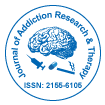Notre groupe organise plus de 3 000 séries de conférences Événements chaque année aux États-Unis, en Europe et en Europe. Asie avec le soutien de 1 000 autres Sociétés scientifiques et publie plus de 700 Open Access Revues qui contiennent plus de 50 000 personnalités éminentes, des scientifiques réputés en tant que membres du comité de rédaction.
Les revues en libre accès gagnent plus de lecteurs et de citations
700 revues et 15 000 000 de lecteurs Chaque revue attire plus de 25 000 lecteurs
Indexé dans
- Indice source CAS (CASSI)
- Index Copernic
- Google Scholar
- Sherpa Roméo
- Ouvrir la porte J
- JournalSeek de génamique
- Clés académiques
- JournalTOC
- SécuritéLit
- Infrastructure nationale du savoir de Chine (CNKI)
- Bibliothèque de revues électroniques
- Recherche de référence
- Université Hamdard
- EBSCO AZ
- OCLC-WorldCat
- Catalogue en ligne SWB
- Bibliothèque virtuelle de biologie (vifabio)
- Publons
- Fondation genevoise pour l'enseignement et la recherche médicale
- Euro Pub
- ICMJE
Liens utiles
Revues en libre accès
Partager cette page
Abstrait
The Influence of Foods and Beverages on Polyethylene Glycol Marker Detection in Urine
Sven Einwächter, Bernd Huppertz, Mirco Bibl and Klaus Baum
Purpose: In the fight against drug abuse, Polyethylene Glycol (PEG) markers have become an established method to prevent false negative results by means of donor urine or own clean urine that has been stored beforehand. Until now, little is known about the influence of meal composition, time interval between meal and PEG marker ingestion, and acute urine dilution on PEG marker detection.
Aims: In the present study we investigated the detectability of monodisperse PEG markers under field conditions with variable meal compositions, caloric intakes, and drink behaviors.
Methodology: 448 subjects (272 females and 176 males) took part in the study. Six study centers recruited subjects for 2 runs differing in the time interval between capsule marker intake and urine sampling (40 and 60 mins). Two different meal compositions (either carbohydrate or fat-protein rich) and three different delays between meal completion and marker intake were tested (30, 60 and 120 min.). Food and beverage intake could be made ad libitum but were protocolled. Capsules containing either a PEG 8/PEG 10 or a PEG8/PEG 12 combination with 150 mg, each served as PEG markers. PEG concentrations from PEG 8 to PEG 12 were determined by liquid chromatography mass spectrometry. Individual thresholds for positive PEG detection were used by means of the concentrations of non-administered PEGs.
Main results: Both the caloric and the fluid intake significantly influenced PEG marker concentrations in urine. The 40 mins resorption phase led to a detection rate between 81% and 100%. All subjects were tested positive for PEG markers following the 60 mins resorption phase.
Conclusion: The marker detection following a PEG marker containing capsule is a valid method, when individual thresholds and a marker resorption phase of 60 mins are taken into account. That holds true independently of the time interval between meal and marker intake, meal composition, and beverage volume.
Revues par sujet
- Agriculture et Aquaculture
- Biochimie
- Chimie
- Food & Nutrition
- Génétique et biologie moléculaire
- Géologie et sciences de la Terre
- Immunologie et microbiologie
- Ingénierie
- La science des matériaux
- Le physique
- Science générale
- Sciences cliniques
- Sciences environnementales
- Sciences médicales
- Sciences pharmaceutiques
- Sciences sociales et politiques
- Sciences vétérinaires
- Soins infirmiers et soins de santé
Revues cliniques et médicales
- Allaitement
- Anesthésiologie
- Biologie moléculaire
- Cardiologie
- Chirurgie
- Dentisterie
- Dermatologie
- Diabète et endocrinologie
- Gastro-entérologie
- Immunologie
- La génétique
- Maladies infectieuses
- Médecine
- Microbiologie
- Neurologie
- Oncologie
- Ophtalmologie
- Pédiatrie
- Recherche clinique
- Soins de santé
- Toxicologie

 English
English  Spanish
Spanish  Chinese
Chinese  Russian
Russian  German
German  Japanese
Japanese  Portuguese
Portuguese  Hindi
Hindi